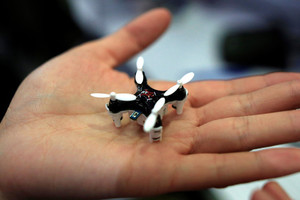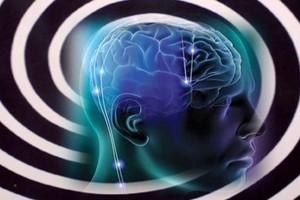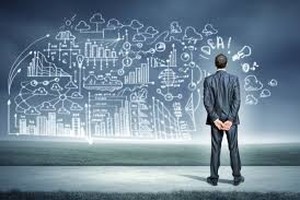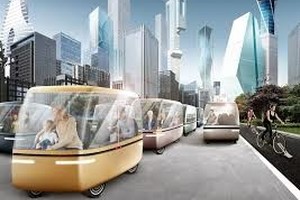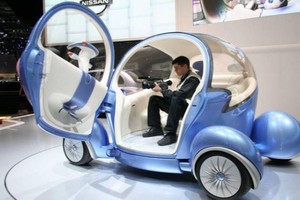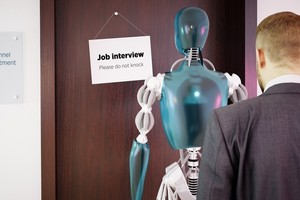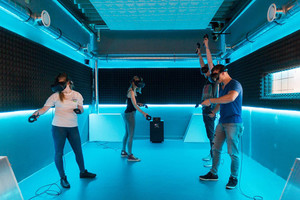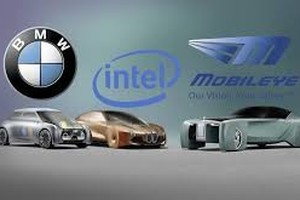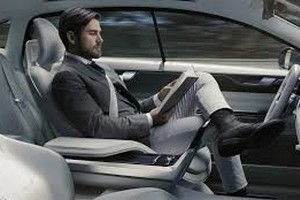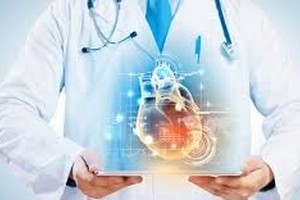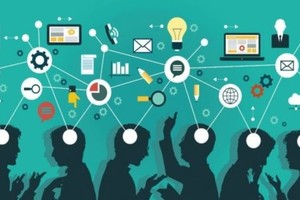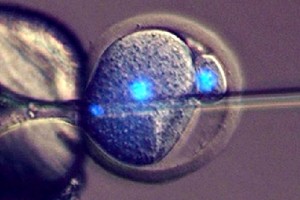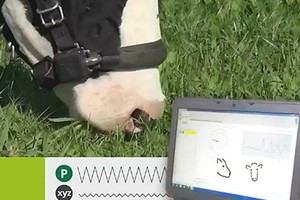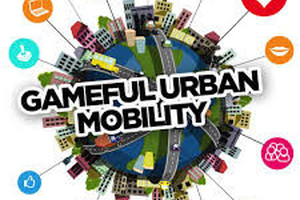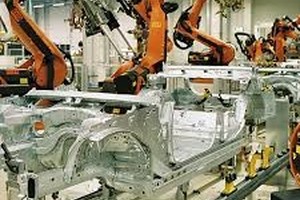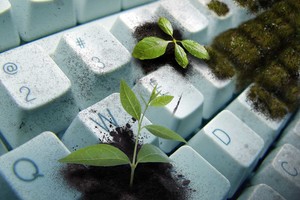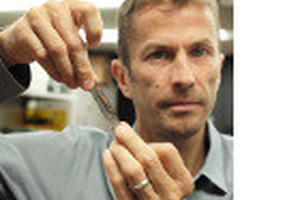Big Data Analaytics: Wettlauf um die Rettung der Antibiotika
Künstliche Intelligenz und maschinelles Lernen könnten Forschern weltweit bei der Entwicklung neuer Antibiotika helfen. Big Data und maschinelles Lernen sind unverzichtbar, um unsere Mikrobiome zu entschlüsseln.
- 16.08.2017, 19:51 von Editor Due
- 0 Kommentare
- 17.991 Aufrufe
Here's what will happen when 30 billion devices are connected to the internet
Scientists have started shrinking sensors from millimeters or microns in size to the nanometer scale, small enough to circulate within living bodies and to mix directly into construction materials. This is a crucial first step toward an Internet of Nano Things (IoNT).
- 16.08.2017, 19:41 von Editor Due
- 0 Kommentare
- 291.915 Aufrufe
Wie funktionieren die Hörgeräte in Zukunft?
Trotz großer technischer Fortschritte in der Vergangenheit, sind Hörgeräte heute noch nicht in der Lage das menschliche Hörvermögen vollständig zu ersetzen. Es gibt verschiedene Ansätze, wie in der Zukunft Hörgeräte funktionieren und gesteuert werden könnten.
- 16.08.2017, 19:37 von Editor Due
- 0 Kommentare
- 12.621 Aufrufe
The past, present and future of digital imaging
Smartphones have changed the way we interact with photos, and soon there will be cameras everywhere.
- 15.08.2017, 21:13 von Editor Due
- 0 Kommentare
- 12.627 Aufrufe
New report predicts how our lives will change in 2050
THE global population is growing at a rapid rate and the way we live is likely to change. A new report has made a number of predictions for our lives in 2050. More cities will be built for the future population.
- 15.08.2017, 21:07 von Editor Due
- 0 Kommentare
- 13.416 Aufrufe
In dieser Zukunft herrscht der Techno-Gott
Thorsten Schäfer-Gümbel hat in der Zeitung Vorwärts soeben eine Buchbesprechung vorgelegt. Sein Lesetipp gilt dem Buch „Homo Deus“ von Yuval Noah Harari und er fragt darin, wie wir in Zukunft leben werden.
- 15.08.2017, 21:02 von Editor Due
- 0 Kommentare
- 11.255 Aufrufe
Das Auto von morgen
Allen Imageverlusten und Umweltaspekten zum Trotz: Das Auto ist das individuelle Fortbewegungsmittel schlechthin – und wird es auch noch eine ganze Weile bleiben. Wenn auch in veränderter Form. Antrieb und Technik werden sich ändern, genauso wie die Besitzverhältnisse.
- 15.08.2017, 20:58 von Editor Due
- 0 Kommentare
- 10.598 Aufrufe
Interactions and Perceptions of Kinetic Wearables
Scientists from the MIT Media Lab believe that future jewelry should not be static, but “living objects on the body.” So they developed Kino, a line of jewelry that can move and interact with the environment.
- 12.08.2017, 20:55 von Editor Due
- 0 Kommentare
- 12.476 Aufrufe
Ein Herz aus Spinnenseide
Dank Spinnenseidenprotein und 3D-Druck haben Herzinfarktpatienten bald eine echte Chance auf Wiederherstellung ihres beschädigten Herzgewebes.
- 12.08.2017, 20:49 von Editor Due
- 0 Kommentare
- 10.866 Aufrufe
Skilling up for the future
What will humans do once robots take our jobs? Regardless of whether you think machines and robots are going to take your job or whether you’re more optimistic and believe new roles will develop, one thing is certain – jobs of the future will be different.
- 12.08.2017, 20:43 von Editor Due
- 0 Kommentare
- 10.437 Aufrufe
Start-ups arbeiten am Durchbruch von Virtual Reality
Eine Gruppe von Menschen irrt durch eine Halle, torkelt, lacht, fuchtelt mit den Armen durch die Luft und hat sichtlich Spaß. Unter ihnen Trendscouts von Hewlett Packard und von einem taiwanesischen Computerhersteller.
- 12.08.2017, 20:38 von Editor Due
- 0 Kommentare
- 13.325 Aufrufe
Intel will build a fleet of 100 fully autonomous vehicles
Intel announced that it will build a fleet of Level 4, fully self-driving vehicles for testing in the US, Israel, and Europe. The first vehicles will hit the road later this year, and the fleet will eventually scale to more than 100 automobiles.
- 12.08.2017, 20:27 von Editor Due
- 0 Kommentare
- 15.705 Aufrufe
Here's the future of driving
Everything about cars is changing right now. That means how we power them, how drive them and even how we own them. Cars are becoming increasingly electric. Plug-in vehicles of any kind are just a sliver of auto sales today, but experts agree electric cars will overtake the market – it's just a matter of when.
- 12.08.2017, 20:19 von Editor Due
- 0 Kommentare
- 10.840 Aufrufe
What You Need To Know About The Future Of Healthcare
Thanks to a focus on personalized data, real-time information and blockchain technology; healthcare is finally getting a reboot. And the implications are significant.
- 12.08.2017, 20:08 von Editor Due
- 0 Kommentare
- 13.209 Aufrufe
About the Future of Work and the Global Workforce
We live in the era of the gig economy, which is a labor market characterized by the prevalence of short-term contracts or freelance work as opposed to permanent jobs
- 12.08.2017, 20:02 von Editor Due
- 0 Kommentare
- 12.654 Aufrufe
Embryo Farming may be on the horizon – opportunities and risks
Scientists have gained a better understanding of embryonic development, have refined their use of fertility treatments and have come up with revolutionary techniques to identify and prevent disease in babies – the so-called "three-DNA babies" is perhaps the greatest example.
- 12.08.2017, 19:52 von Editor Due
- 0 Kommentare
- 18.728 Aufrufe
«Swiss Future Farm» im Aufbau
In Tänikon werden neue Tools und Technologien für die Schweizer Landwirtschaft entwickelt. Der Versuchsbetrieb Tänikon entwickelt sich zur «Swiss Future Farm». Die Digitalisierung hat das Potenzial, die kleinstrukturierte Schweizer Landwirtschaft wettbewerbsfähiger und nachhaltiger zu machen.
- 12.08.2017, 19:44 von Editor Due
- 0 Kommentare
- 10.230 Aufrufe
Your Car Will Read Your Biology to Make Decisions for You
As automakers like Tesla, Toyota, and Volvo focus on developing vehicles that can interact autonomously with their environments, Ari Teman is exploring ways the cars of the future could interact with you. The inventor, designer, and technologist told Futurism he sees biometrics, which is “the ability for a vehicle, an environment, or a service to recognize who you are and how you are,” as one of the biggest developments in transportation in recent years.
- 10.08.2017, 19:41 von Editor Due
- 0 Kommentare
- 15.954 Aufrufe
Entwicklung eines Roboters für die Pflege von ALS-Kranken
Der mit der ALS-Erkrankung (Amyotrophe Lateralsklerose) einhergehende Verlust der Selbstständigkeit und die Notwendigkeit adäquater und umfangreicher Pflege erfordert ein patientenzentriertes Gesamtkonzept. Ziel des Projektes ROBINA ist daher die Entwicklung von robotergestützten individuellen und ressourcenorientierten Palliativ- und Intensivdiensten.
- 10.08.2017, 19:06 von Editor Due
- 0 Kommentare
- 16.539 Aufrufe
What will the car of 2040 be like?
Following the announcement petrol and diesel engine cars will be banned from sale in 2040, the car of the future is up for grabs.
- 09.08.2017, 23:53 von Editor Due
- 0 Kommentare
- 10.875 Aufrufe
The impact of technology on the future of urban mobility
As the world increasingly moves towards finding alternative ways to solve some of its most urgent and pressing socio-economic challenges such as health, education, water, transport and shelter, it is clear that technology and innovation are key elements in ensuring these changes are sustainable and scalable.
- 09.08.2017, 23:34 von Editor Due
- 0 Kommentare
- 15.147 Aufrufe
New Mobility Could Change Future CAFE Rules
Both sides seem to realize new trends in personal mobility – not politics – may make the 45-year-old CAFE (Corporate Average Fuel Economy) standards obsolete.
- 09.08.2017, 23:18 von Editor Due
- 0 Kommentare
- 11.165 Aufrufe
Der digitale Wandel im Ernährungssystem
Die Digitalisierung verändert den Agro-Food-Sektor grundlegend. Obwohl es nicht das erste Mal ist, dass uns technologische Umwälzungen bevorstehen, erfolgt der Wandel derzeit schneller und weitreichender als je zuvor. Wie wir verantwortungsvoll damit umgehen können, diskutiert hier Eduardo Pérez, Projektleiter ETH Studio AgroFood, World Food System Center, an der ETH Zurich.
- 09.08.2017, 22:53 von Editor Due
- 0 Kommentare
- 11.074 Aufrufe
Quantencomputern klären komplexe chemische Prozesse
Wissenschaft und Computerindustrie setzen grosse Hoffnungen auf Quantencomputer, mögliche Anwendungen beschreiben sie aber meist nur vage. Anhand eines konkreten Beispiels zeigen Wissenschaftler der ETH Zürich nun, was künftige Quantencomputer tatsächlich zu leisten vermögen.
- 09.08.2017, 22:28 von Editor Due
- 0 Kommentare
- 12.942 Aufrufe
IBM makes magnetic tape storage competitive for the future of cloud storage
Mit der drastischen Erhöhung der Speicherdichte auf Magnetbandspeicher will IBM nicht nur Rechenzentren oder das Disaster-Recovery bedienen. Vielmehr werden mit der Technik insbesondere auch Zukunftsfelder wie Big Data oder Cloud Computing adressiert.
- 08.08.2017, 13:28 von Editor Due
- 0 Kommentare
- 286.063 Aufrufe


